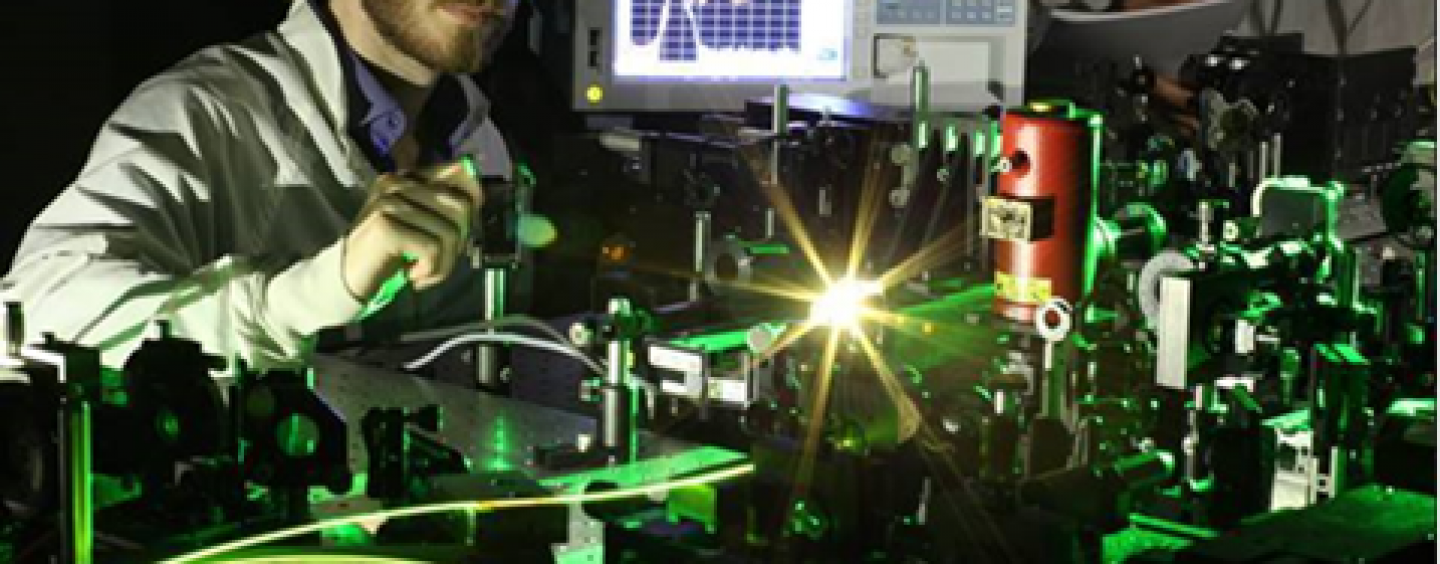When the work of a photonics research group at Université Laval in Quebec, Canada called for substantial innovation in optical spectral analysis, they turned to long-term optical testing solutions partner Yokogawa for help. The results of this decision are today proving pivotal in the acceleration of advanced photonics research.
The potential exists to make notable scientific discoveries through the analysis of mid-infrared (MIR) light. However, while optical equipment is in widespread use for applications involving short wavelengths up to 2 μm, it seems that experimental projects are extremely hard to implement at wavelengths of between 3 and 5 μm. Those involved in this advanced scientific domain will tell you that much of the experimental equipment deployed for these longer wavelengths (such as emitters, connectors, fiber optic cable and detectors) requires special development: a frustrating situation for many, including Université Laval, which happens to be the oldest French-language university in North America.
Université Laval’s photonics group, led by professors Martin Bernier and Real Vallee, offers special expertise in the development of MIR fiber lasers and MIR fiber components, such as fiber Bragg gratings (FBGs). Their work requires the precise characterization of key active and passive optical components at MIR wavelengths.
In the past, to measure wavelengths of 3-5 μm, the only commercially available option open to the research group was their Fourier Transform Interferometer (FTI), which is capable of measuring the peak wavelength of an optical input signal at MIR wavelengths. However, there are severe compromises associated with its ability to effectively measure the spectral power distribution of a broadband input, chiefly due to technology limitations such as low dynamic range and low sensitivity. Additionally, the FTI introduces spurious peaks in spectral power distribution and fails to measure the true spectrum at baseline level.
The OSA advantage
We know from experience that genuine optical spectrum analyzers (OSAs) based on the alternative monochromator operating principle – where wavelength scanning is obtained through a simple rotation of the grating – offer far superior performance when measuring broad spectral power distribution. However, the instruments which the research group were using did not cover the MIR spectrum of 3 to 5 μm.
As a result, the researchers developed their own measurement set-up that included a complex arrangement of standard and proprietary components occupying an area roughly the size of a pool table. For several years, this home-grown testing solution served to characterize the lasers, fiber optic cables, and other components in development by professors Bernier and Vallee.
Unfortunately, the set-up posed a number of challenges. For instance, the researchers told us it was difficult to acquire consistent measurement outputs from one test session to another, while the calibration process would typically take over an hour to complete before any substantive testing could actually commence. The system was also difficult to learn, let alone troubleshoot or fix in the event of unexpected or improbable results. In short, the equipment was a burden on the researchers’ time, prompting the decision to try and make a substantial improvement – with a little help from Yokogawa.
Requirements and solution
The research group’s work had two main requirements: to produce repeatable, accurate, and trusted measurement outputs that would be consistent across any number of test sessions; and provide a testing solution that any scientist could quickly learn to use and which could be calibrated and operated quickly.
To arrive at a solution, a collaboration was struck with our expert team here at Yokogawa that resulted in the extension of our renowned AQ6370 series of OSAs. Backed by research funding, we developed a new benchtop OSA model, the AQ6377, with the aim of extending bandwidth capabilities to 5 μm.
The research group partnered closely with our North American engineering team and our R&D specialists in Japan. Extensive prototype testing took place, requiring the provision of detailed characterizations of the FBGs and other specialized components.
Breakthrough technology
Following a thorough research and development process, we launched our new AQ6377, an OSA that exceeded the specifications set by the Université Laval team, offering bandwidth of 1.9 to 5.5 μm, wavelength resolution of 0.2 nm, and wavelength accuracy of ±0.5 nm across the measurement range.
Featuring built-in self-calibration, our AQ6377 provides accurate measurement outputs that are consistent from one test session to the next. Supported by detailed documentation and training resources, it offers easy learning and use by all members of the research group, including new postgraduate students. Moreover, as our AQ6377 produces clean representations of the broad MIR spectrum, researchers can trust the spectral power distributions which they see on the display screen.
The Université Laval photonics laboratory can now confidently characterize MIR components and work to make breakthroughs in the fields of communications, medical diagnosis, advanced optical sensing, and environmental and atmospheric sensing.
Read the full case study here.



No Comments so far
Jump into a conversationNo Comments Yet!
You can be the one to start a conversation.